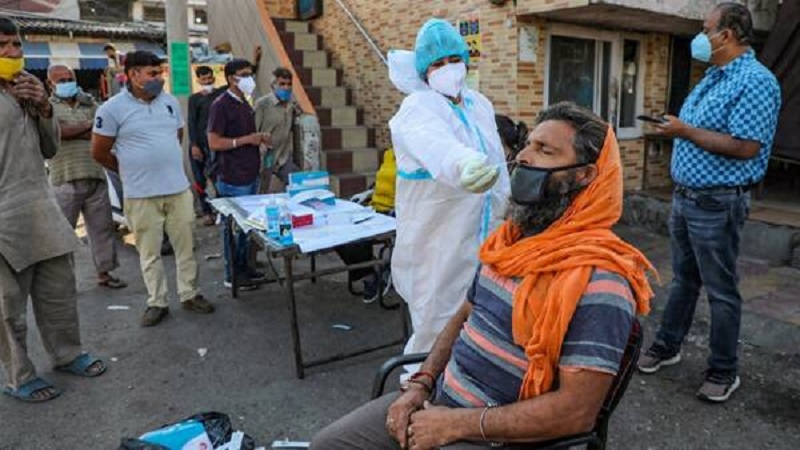 Image Courtesy:indianexpress.com
Image Courtesy:indianexpress.com
In order to tackle the pandemic better, the Health Ministry has issued new guidelines for peri-urban, rural and tribal areas that have been adversely affected by coronavirus. As the second wave has devastated the rural areas with no infrastructure, the central government has directed the states to set up a three-tier structure with oxygen beds and other important medical equipment like N-95 mask, triple layer medical mask, gloves, sanitisers, pulse oximeters, thermometers, disinfectants etc.
A lot of issues pertaining to under reporting of cases and deaths from rural areas have been doing the rounds since the second wave. Several state courts have taken stock of the grim situation issuing important directions to increase facilities and testing. Panic and fear have also set in after hundreds of bodies were seen floating in the Ganga and some in Yamuna. Remote areas of Bihar, Uttar Pradesh, Madhya Pradesh, Gujarat are complaining about lack of beds, oxygen, medicines, ventilators and medical staff.
As per Government data of December 2020, a total of 2,371 Primary Health Centres (PHCs) have been constructed against the sanctioned 2,941 centres. Out of the sanctioned 28,150 capacity of Sub Centres for health, only 21,249 have been completed, with no update about the remaining 6,901 centres.
Out of 175 District Hospitals, only 148 have been constructed. For renovation/upgradation purposes, the government aimed at 3,227 hospitals but only 2,407 hospitals have been completed. Out of the grand total 23,225 sub centres, merely 16,548 have been renovated. Only 159 Sub District Hospitals have been constructed against the target 242 hospitals. For renovation, only 1,011 SDHs could be finished as against 1,238 sanctioned ones.
The Government’s plan of a three-tier structure involves:
1. Covid Care Centre (CCC) to manage mild/asymptomatic cases
2. Dedicated Covid Health Centre (DCHC) to manage moderate cases
3. Dedicated Covid Hospital (DCH) to manage severe cases
Peri-urban and rural areas have been directed to plan a minimum of 30-bedded CCCs that may be set up in schools, community halls, marriage halls, panchayat buildings in close proximity of hospitals/healthcare facilities, or tentage facilities in Panchayat land, school ground, etc. Qualified AYUSH doctors/Final year AYUSH students/Final year BSc nurses may be considered to run the CCCs.
Then, the Primary Health Centre/Community Health Centre/Sub District Hospital in these rural areas will be the Dedicated Covid Health Centre (DCHC) for management of moderate Covid cases. The facility may also have a capacity of 30 beds. A separate block of Primary and Community Health Centres shall be designated as DCHC with separate entry, exit and zoning. Private hospitals will also be designated as these DCHCs. The guidelines state that all districts should be prepared to increase DCHC beds as per the case trajectory and expected surge.
To treat severe cases of infection, District Hospitals, other identified private hospitals or a block of these hospitals shall be converted as the dedicated Covid Hospitals (DCH). In addition, Sub-district/Block level hospitals fulfilling the requirements may also be designated as the DCH for the identified CCC and DHCC in their catchment area.
For testing, the Central government’s plan states that Community Health Officers (CHOs) and Auxiliary Nurse Midwife (ANMs) should be trained in performing rapid antigen testing. RAT kits should be provided at all public health facilities including Sub-centres/Health and Wellness Centres and Primary Health Centres.
Another response strategy adopted by the Centre for tribal areas include mobile medical units. As tribal areas pose additional challenges with minimum adequate facilities, the Central government has come up with the idea of Mobile Medical Unit (MMU) to facilitate access to public health care in tribal areas.
According to the data provided by the Health Ministry, as many as 479 out of 718 districts have reported a positivity rate above 10 percent. The actual numbers could be way higher. Madhya Pradesh has the maximum number of districts clocking above 10 percent positivity rate at 38 and Tamil Nadu at 37.
In Maharashtra, out of 36 districts, 33 have been reporting over 10 per cent positivity rate and Karnataka has reported 30 districts. States like Odisha and Uttar Pradesh have reported 27 and 14 districts respectively. The infection rate has also soared in West Bengal with 23 districts affected and Assam with 24 districts. Rajasthan also has 27 districts with similar infection rate.
Other States data is as follows:
States | Districts with above 10% positivity rate |
Gujarat | 17 |
Andhra Pradesh | 13 |
Arunachal Pradesh | 13 |
Bihar | 12 |
Chhattisgarh | 22 |
Delhi | 8 |
Goa | 2 |
Haryana | 21 |
Himachal Pradesh | 12 |
Jammu and Kashmir | 12 |
Jharkhand | 11 |
Kerala | 14 |
Ladakh | 1 |
Lakshadweep | 1 |
Manipur | 10 |
Meghalaya | 8 |
Nagaland | 7 |
Puducherry | 4 |
Punjab | 17 |
Sikkim | 4 |
Tripura | 2 |
Uttarakhand | 14 |
Andaman and Nicobar | 2 |
Chandigarh | 1 |
The new guidelines of the Health Ministry may be read here.
Related:
Uttar Pradesh: Bodies in the river, more buried in the sands, tell tales of Govt apathy
Bihar’s odious and short-sighted response to Covid-19
Are obituaries in Gujarat newspapers a better indicator of real Covid-deaths?
Death due to lack of timely medical aid is a violation of right to life: Patna HC
Around 140 bodies found in river Ganga, officials yet to confirm them as Covid deaths